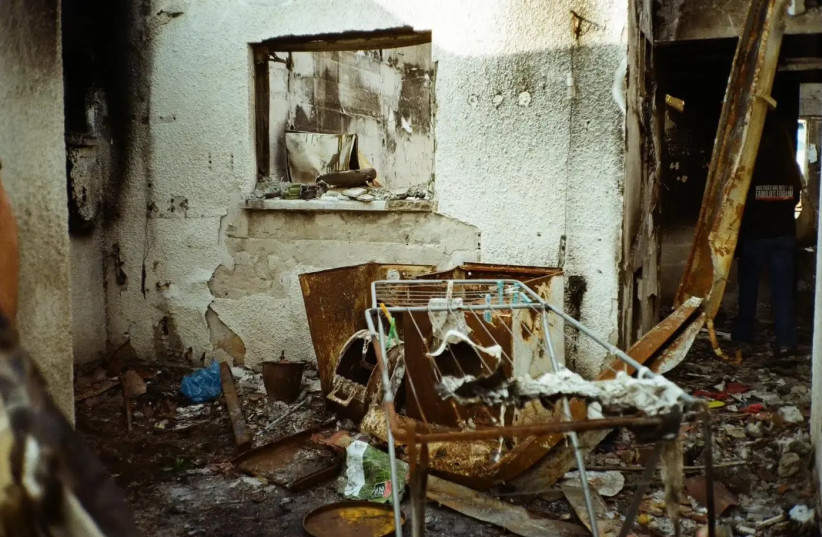The IDF announced its framework for conducting an internal report on the military’s failure to prevent Hamas’s October 7 attack, noting it will grapple with decisions made in real-time but will begin by looking back to March 2018.
That month marked the start of a low-intensity border conflict amid protests initiated by Hamas Gaza chief Yahya Sinwar, who took over the Strip in February 2017.
The report's look at the past is significant because it could have potential implications for Prime Minister Benjamin Netanyahu, whose premiership spans four and a half years out of the six under review.
This also has implications for war cabinet minister Gadi Eisenkot, who was IDF chief of staff from 2015 to 2019; Aviv Kohavi, who was IDF chief from 2019 to January 2023, and of course all current military and defense officials, including IDF Chief-of-Staff Lt-Gen. Herzi Halevi, Shin Bet Chief Ronen Bar, and IDF intelligence chief Maj- Gen. Aharon Haliva.
However, it could give a free pass to war minister Benny Gantz, who was IDF chief from 2011-2015. Some had suggested that a review of the failed policies needs to date back to Operation Cast Lead (2008), to Hamas’s takeover of Gaza, or even back to the Second Intifada, when the decision to carry out a major anti-terror operation – like Operation Defensive Shield in the West Bank (2002) – was nixed.

Timeline could help Gantz politically
If elections were held now, Gantz, according to current polls, would have around double Netanyahu’s electoral support for the next Knesset.
The time frame of the report could help Gantz against Netanyahu.
Military sources have said that the report could not date back forever, or it would take too long to bring results and improve the military and present findings to the public in time to restore its confidence in the IDF.
The report is expected to come out in early June.
There was no mention of whether an external review, which was originally planned, will still happen, and if so, when.
Absent this external review, the IDF was unclear regarding how military officials in the Operations Directorate would be able to objectively judge Halevi, who outranks everyone in that directorate, as well as others, such as Haliva.
Halevi explained that the probe is being carried out “to restore confidence” to those displaced from the South and North. He said that the IDF and the country must learn from the tragedy and improve, regarding both defense and offense.
Further, Halevi said that the IDF failed the citizens, and that “it is hard to say we learned our lesson without this probe.”
The probe will look into the concepts held by the IDF regarding how Hamas was to be handled along the Gazan border, the understanding of Hamas, how to prepare operationally for defense, and how to understand Hamas’s thought process.
Moreover, the probe will investigate the intelligence and the decision-making process surrounding October 7. The probe will also investigate the processes of defense between October 7 and October 10.
It appears the report would also look into the hostilities after October 10, including specific battles against Hamas, the method of rallying the reserves, the handling of logistic issues, and the process of evacuating civilians – and the bodies of killed ones – from the borders, but that these would be secondary to the investigation concerning October 7 and the decisions leading up to that day.
In operational news, in the North on Thursday, IAF jets attacked two Hezbollah military buildings in the Aitaroun and the Ayta ash Shab areas in southern Lebanon.
Late Wednesday evening, the IDF struck a Hezbollah military structure in the al-Matmura area, in addition to an observation post of the terrorist group in the Jebbayn area.
Also on Thursday, Hezbollah fired rockets at Rosh HaNikra, Ya’ara, and the Upper Galilee regions, leading to eight rocket sirens but no injuries. The military said the IDF targeted the fire's sources with artillery fire.
Later on Thursday, there were reports that the IDF fired artillery in response to anti-tank missiles being fired from Lebanon at Metulla, where two houses were reportedly damaged.
Throughout Gaza, the military continued lower-level clean-up operations, where there were small-scale altercations with Hamas forces.
In the West Bank, the IDF continued its regular raids, arresting Hamas and other terror suspects.
Jerusalem Post Staff contributed to this report.
